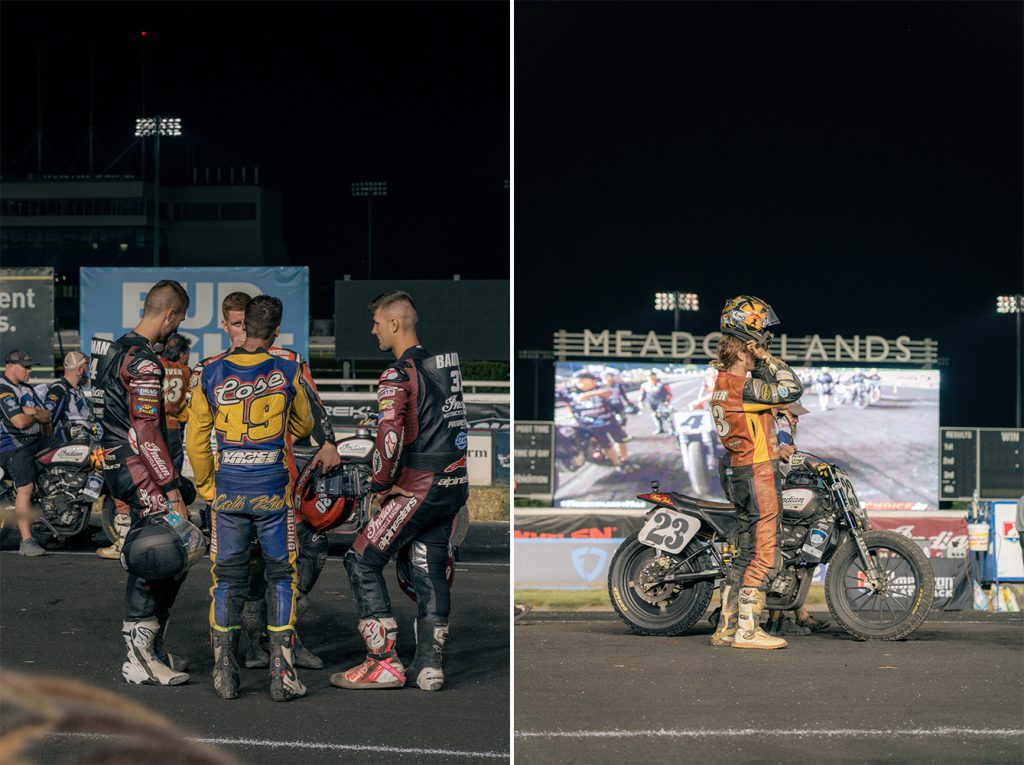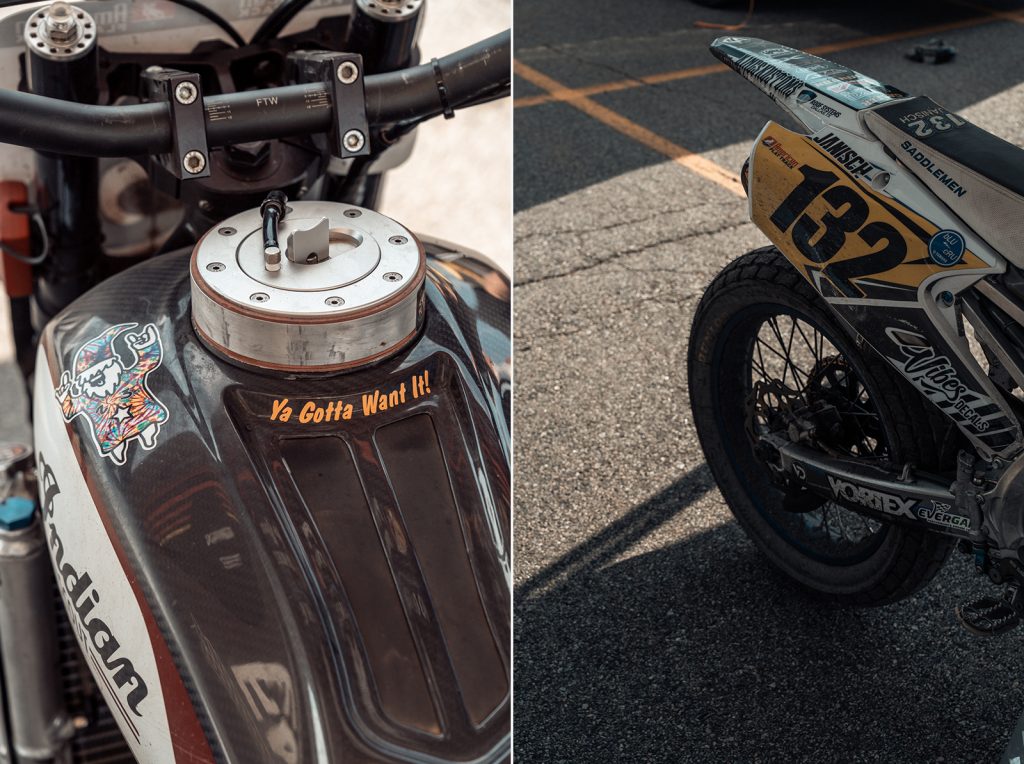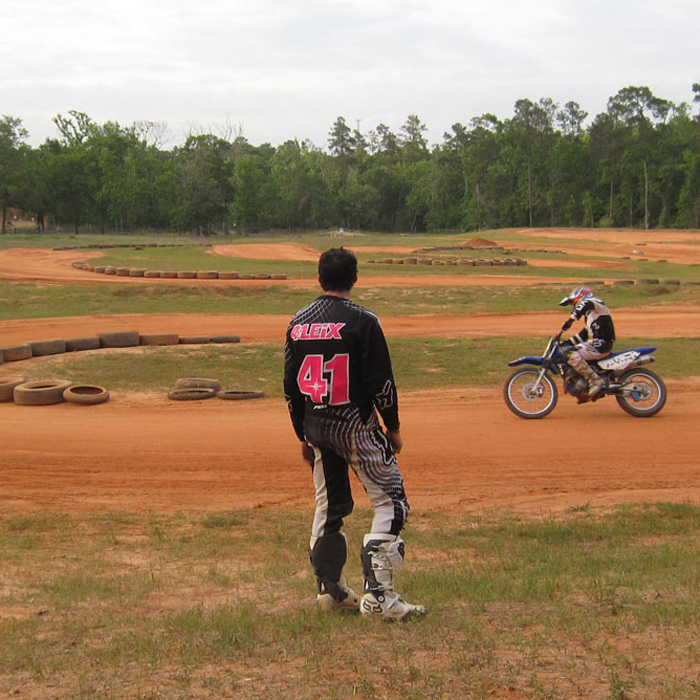Inside the Fast-Paced World of American Flat Track Racing
The racing world’s lesser-known discipline proves as exhilarating as its counterparts

Formed in 1932 by the American Motorcyclist Association (AMA), Class A Pro Flat Track Racing was the USA’s original extreme sport. Like the early days of the Grand Prix, where carmakers put new technologies to the test, American Flat Track (AFT) was a stage for motorcycle companies to try out innovations that would later be applied to street bikes. Competition in any field yields fertile ground for growth but when companies are literally racing head to head, it hastens developments in capability and safety. A lot of the tech we take for granted in our cars and motorcycles stems from racing. And while cars are seen as a necessity for many, motorcycles are perceived as an indulgence for few. But AFT could be a major player in changing that perception through its racing series and its brand partnerships.

Racing can appear an exercise in frivolity: with myriad sponsors chasing eyeballs to drive sales, athletes chasing personal glory and venues chasing attendance numbers. While that’s certainly part of racing, it’s a small part—especially when it comes to American Flat Track. As we discovered when attending our first AFT race at The Meadowlands, it’s a grassroots organization with an authenticity that’s undeniable—and perhaps surprising. It’s also enthralling.

Despite knowing nothing about AFT superstar Jared Mees (whose dominance was cemented last season when he went six-for-six at the highly challenging mile long tracks, where speeds can reach 140mph) or rising talent for the overall championship, Briar Bauman, we found ourselves captivated by the chase. We also found ourselves eager to get out on a motorcycle—and therein lies the other cornerstone of AFT.
As much as the organization is about competition for both riders and brands it’s also about the collective goal of fostering new talent and interest—something made abundantly clear to us by American Flat Track’s CEO Michael Lock. When he took the helm in 2016 he saw massive potential in America’s oldest motorbike racing series and in the public’s enthusiasm for motorcycling in general. Through careful stewardship of the brand and refinement of the racing format itself, AFT has seen impressive growth in the past three seasons. A major element has been attracting new riders and audiences to the AFT Fan Zone where manufacturers have their latest bikes on display—and oftentimes available for test rides. Lock’s mission has been to make AFT as accessible as possible and riding a motorcycle less intimidating.

The most crucial factor for the sport and its increasing popularity is safety. One such development here is that airbag racing suits will be mandatory in the SuperTwins class for the 2020 season, Lock says that will eventually extend to Production Twins and Singles as well. As we saw during the season finale races a number of riders already wear Dainese’s D-Air racing suits with inflatable chest and shoulder sections, and it’s a good thing as crashes occur with regularity.
Given that flat track racing differs greatly from MotoGP, the calibration of these suits needed to be specific to AFT. The Dainese-sponsored Estenson Racing team tested the D-Air system during the 2019 season to help refine the algorithm needed to minimize unintentional inflation during hard impact (say, from landing a jump during a TT style race). Having added this new level of safety to the premier racing class, Lock expects AFT to be seen as a pioneer in better protection of its athletes.

Since our first day of racing and exploration, we’ve found ourselves eager for the 2020 season (upcoming events have been rescheduled and the first race is now on 30 May 2020, check the site for updates). Indian and Harley-Davidson will once again be battling it out (as they have since the 1930s) but there are a number of new storylines in AFT that we’re excited to follow as well. Captivating new talent like Shayna Texter—the first woman to win an AFT main event and now winningest rider in AFT Singles Class history—are poised to succeed and entertain. Royal Enfield will bring their all-women flat track team to select races in 2020 as part of their BUILD TRAIN RACE program, for which four women will build custom bikes (using the Royal Enfield INT 650 as the base) and subsequently race them in the AFT Singles Class. It’s exciting to see the oldest continuously operating motorcycle manufacturer in the world getting involved with AFT and doing so in a way that will bolster and encourage women within the sport.

As Lock tells us, he sees AFT going global and believes it’s just a matter of time. When he brought a dozen AFT riders (including stars Mees and Texter) to the UK for the Goodwood Festival of Speed in 2017, their reception was more than warm—it was fevered, with fans scrambling for autographs. And that was before Lock had secured better broadcast deals, revised the race day run-of-show and grown participation in the AFT Contingency Program to include eight motorcycle manufacturers and six brands, pushing the total amount of funds available to riders to $3+ million. Bigger payouts across all three classes means higher stakes and more drama, which leads to more viewers. Having found a balance between the entertainment of vintage slug-it-out racing that made American Flat Track popular in the 20th century and utilizing the latest safety equipment, AFT is poised to have another breakout season.
Images by Andrew Maness












